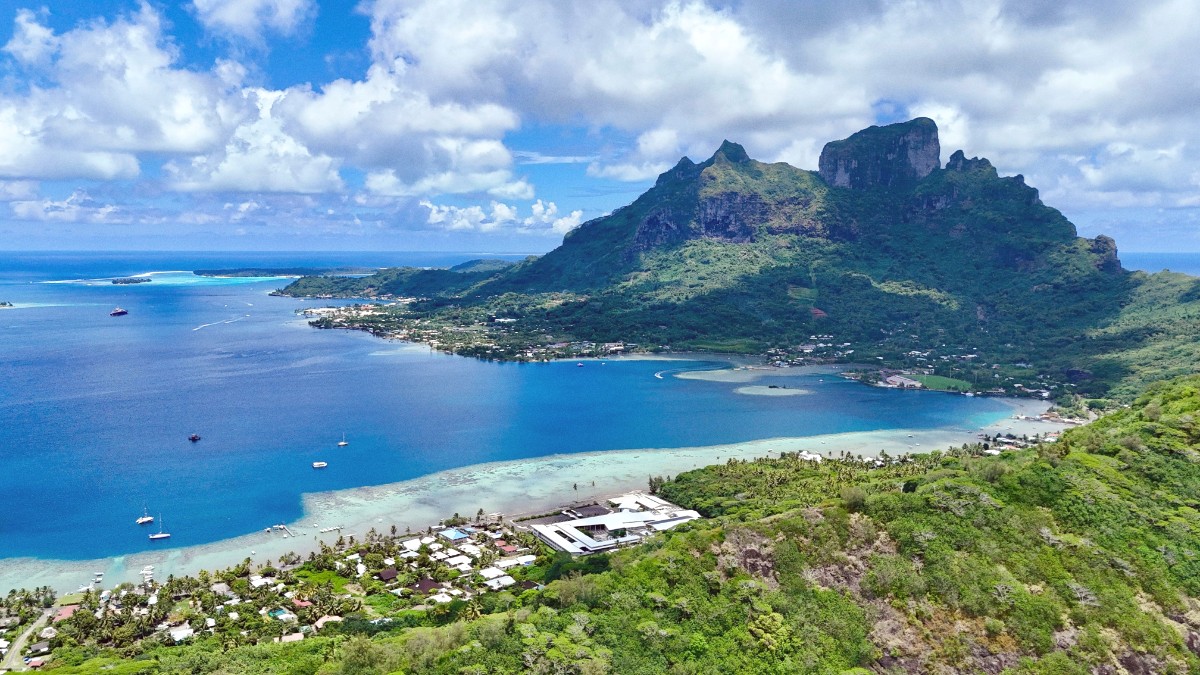
Tahiti And French Polynesia
This guide provides information for planning a trip to Bora Bora. It offers details on preparing for your journey, understanding the island's unique characteristics, and finding activities that match your interests. From the practicalities of travel to suggestions for enjoying the island's environment, this resource endeavors to aid in making informed choices for your visit. Bora Bora presents an experience where relaxation meets adventure, and where the natural world displays its beauty.
Imagine waters so clear you see fish from your private deck, mountains rising in dramatic shapes, and sunsets painting the sky in colors. This is Bora Bora. The island’s fame comes from its stunning lagoon, a palette of blues and greens, and its luxurious resorts with bungalows perched over the water. It draws honeymooners, families, and anyone who wants to experience a special place.
The sound of gentle waves, the warmth of the sun, and the scent of tropical flowers create an atmosphere of peace. Bora Bora provides a sense of calm, a connection to nature, and an appreciation for moments of quiet. The experience of waking up to the lagoon, with fish swimming below your bungalow, becomes a lasting image. This feeling draws people from around the globe, making Bora Bora a top choice for those seeking luxury and natural beauty.
Bora Bora forms part of the Society Islands, an archipelago within French Polynesia, a French overseas collectivity in the South Pacific Ocean. It lies approximately 230 kilometers (143 miles) northwest of Tahiti. The island is relatively small, with a main island measuring about 9 kilometers (5.6 miles) long and 4 kilometers (2.5 miles) wide. A barrier reef surrounds the main island, enclosing a large, clear lagoon.
The history of Bora Bora begins with the great migrations of Polynesian navigators. People from Southeast Asia sailed thousands of miles across the Pacific, using sophisticated knowledge of stars, currents, and winds. European contact occurred relatively late. Captain James Cook sighted the island in 1769, though he did not land. In 1888, France officially annexed Bora Bora. A more recent but impactful chapter involves World War II. In 1942, the United States chose Bora Bora as a South Pacific military supply base. U.S. Forces built an airfield on Motu Mute, where the present-day airport stands. No combat occurred on Bora Bora, but the American presence shaped the island's infrastructure.
Centuries before European contact, Polynesian navigators settled the island, developing a rich culture.
First sighted by Captain James Cook in 1769, followed by missionary contact in 1820.
France officially annexed Bora Bora and the Society Islands in 1888.
"Operation Bobcat" saw the U.S. Use Bora Bora as a strategic military supply base, building an airfield.
The wartime airfield became the island's civilian airport, laying foundation for tourism.
Bora Bora today presents a picture of luxury tourism set against a backdrop of natural beauty. The island is synonymous with overwater bungalows, which offer direct access to the clear lagoon and panoramic views. These accommodations, along with personalized service, form the core of the luxury experience.
Beyond the resorts, Bora Bora offers a range of activities centered around its lagoon. Snorkeling and scuba diving explore colorful fish, coral gardens, and larger marine life like manta rays and sharks. Boat tours, jet skiing, and paddleboarding provide different ways to explore the water.
On the main island, visitors can rent bicycles or scooters to circle the island, visit the small town of Vaitape, and explore local shops. The main island offers a glimpse into local life, with smaller guesthouses, local eateries (roulottes), and markets.
The island's economy depends heavily on tourism. Local culture, while influenced by tourism, remains present in music, dance, and crafts. The pace of life remains unhurried, reflecting the Polynesian concept of "aita pe'ape'a" (no problem).
Bora Bora offers an experience that appeals to those seeking relaxation, romance, and an appreciation for one of the world’s remarkable natural settings. It is a destination that continues to draw visitors with its promise of idyllic moments.
Every visitor finds something to love, whether it is the quiet mornings over the water or the warm evenings under the stars. The island’s reputation grows from these experiences, turning a vacation into a cherished memory.
Unwind with spa treatments, poolside lounging, and the tranquil pace of island life.
Perfect for honeymoons and romantic escapes with private dinners and breathtaking sunsets.
Explore the lagoon through diving, snorkeling, jet skiing, and boat tours.
People visit Bora Bora for different reasons. Some seek the ultimate romantic getaway, enjoying private dinners and spa treatments. Others look for adventure, with opportunities for diving, snorkeling, and exploring the lagoon. The island also appeals to those who simply wish to unwind, spending days by the water, reading, and soaking in the sun.
These offer direct access to the clear lagoon and panoramic views, forming the core of the luxury experience.
High-end resorts on motus provide a secluded, pampered environment with personalized service.
Many bungalows offer direct lagoon access and views of the main island's volcanic peaks.
Offer a range of cuisines, from local Polynesian dishes to international gourmet options. Fine dining is common.
Available at most luxury resorts, allowing for private meals on your bungalow deck with stunning views.
Many resorts arrange special romantic dinners on the beach or private motus.